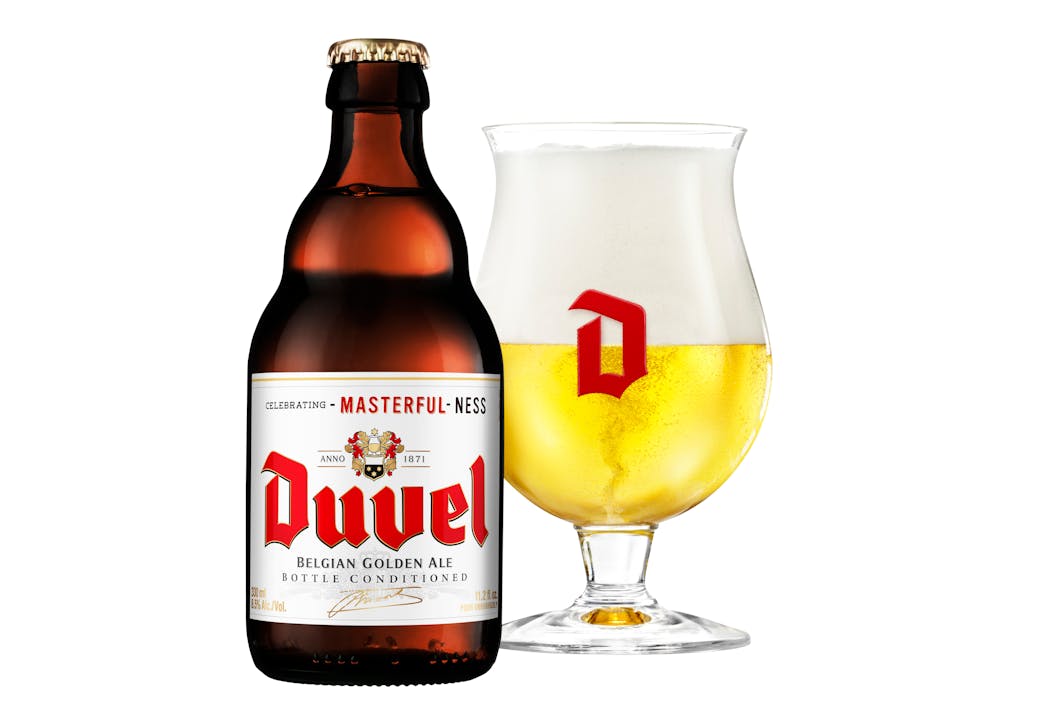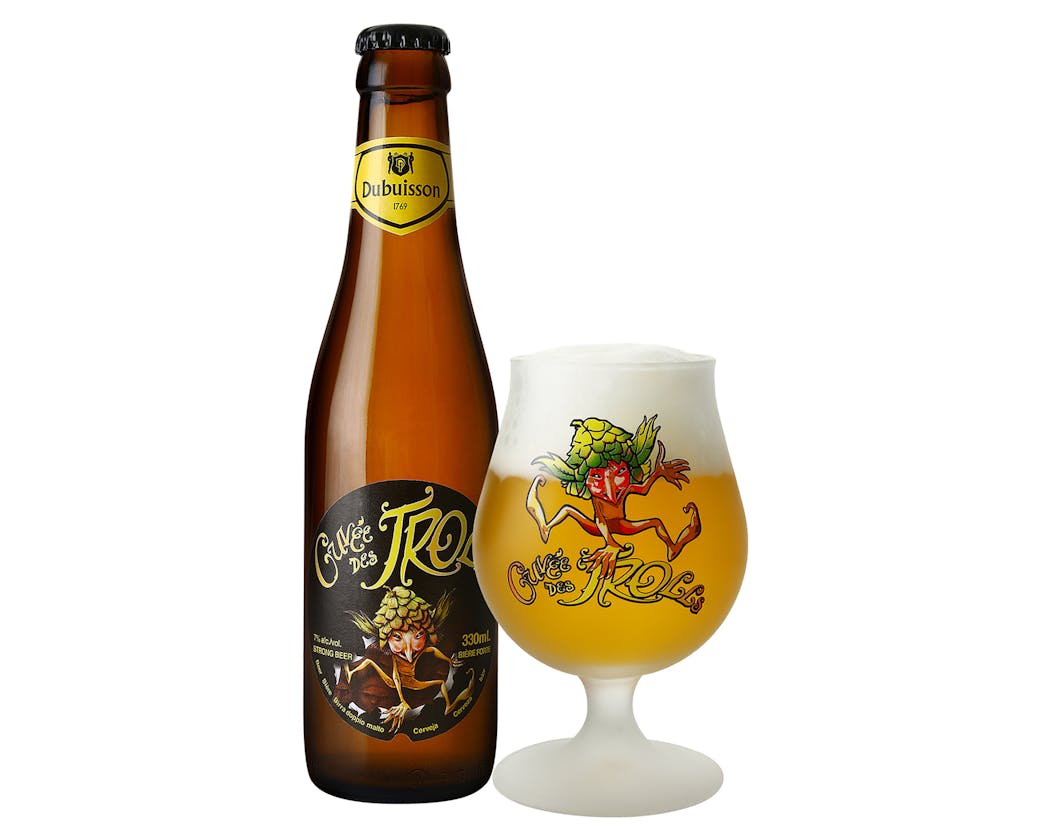Among the great beer-brewing centers of Europe, Belgium is undoubtedly the most unique.
The United Kingdom and Ireland are rightly renowned for their pale ales, porters and stouts. The German- and Czech-speaking lands invented and perfected the lagers that have come to rule the world. But in Belgium, monastic tradition, regional style and a sense of romance and elegance have created a beer culture that boasts almost as many styles as there are brewers and encompasses both the new and the centuries-old.
I once asked a beer importer friend what makes Belgian beers special. He half-jokingly replied, "Can I just say 'yeast?' " He was referring to the singular combination of fermentation-derived fruit and spice that characterizes many Belgian beer styles. Once you have tasted a few, the puffy blend of pepper, banana, citrus and stone fruit is immediately recognizable as "Belgian."
But the elegance of Belgian beers goes beyond yeast. Balance and drinkability are of utmost importance to Belgian brewers and drinkers. While many Belgian beers have alcohol strength north of 8%, delicately layered flavors and high attenuation make them deceptively easy to drink. Big resiny hops and massive malt are not part of the equation. Though full-flavored and complex, Belgian beers aren't palate-wreckers. And high carbonation gives them an almost Champagne-like effervescence that lifts and lightens.
Much of the complexity and drinkability comes from the diversity of ingredients employed. While the German "reinheitsgebot" — the beer purity law declared in Bavaria in 1516 — restricts brewers to just water, barley malt, hops and yeast, Belgian brewers enthusiastically embrace alternative grains and sugars and additions of fruit, spice and other ingredients. Wild fermentation involving a host of yeasts and bacteria is also an important part of the Belgian brewing tradition.
The use of alternative sugars is the primary source of the revered drinkability of Belgian ales. Sugars derived from malted grain are not fully fermentable by brewer's yeast. The residual sugar left behind adds body and sweetness to a beer. By supplementing malt with simpler sugars that yeast can ferment, Belgian brewers achieve the high alcohol levels desired without the thickness of all-malt beers of similar strength.
The best beers to illustrate the Belgian sensibility are the golden ale styles — tripel, strong golden ale and blonde ale. Their stripped-down nature allows the unique blend of strength, drinkability and the characteristics of Belgian yeast to shine. They are true exemplars of the complexity that Belgian brewers coax from even the simplest beers.
Tripels: Strong and deceptively light
For me, the Belgian tripel is the pinnacle of Belgian brewing. It is a strong golden ale with alcohol in the range of 8-10%. It's characterized by rounded malt flavor and sweetness balanced by prominent bitterness and the floral/herbal flavors of European hops. Tripel is deceptively light for its strength with a clean, dry finish, making it utterly quaffable. The spice and fruit notes from fermentation take a leading role.
Tripel is closely associated with Belgium's monastic brewing tradition. It was invented in 1934 at the Abbey of Our Lady of the Holy Heart of Westmalle in Malle, Belgium, and the abbey's Westmalle Tripel remains a benchmark for the style.
Westmalle Tripel is bone-dry with a sharp, bitter bite. Peppery spice and overtones of apricots and peaches round out the characteristic flavors of Belgian yeast and complement soft, bready malt. High carbonation gives it a sparkling effervescence. It's 9.5% alcohol, but drinks like a beer half that strength.
Straffe Hendrik Brugs Tripel Ale 9° from the Huisbrouwerij De Halve Maan in Bruges is another example that leans heavily toward a bitter, peppery edge that's emphasized by its clean, crisp mouthfeel. Softer notes of banana and stone fruit round it out a bit. Hints of lemon/orange citrus give it a lift and an herbal air lingers in the finish.
Brouwerij Het Anker's Gouden Carolus Tripel takes a short step in a softer direction. This one is fruitier with prominent, yeasty flavors and aromas of banana and apricot and a light, lemony background. It is fermented to dryness, as it should be. And the peppery bitterness makes a strong appearance. It all sits on a bed of lightly grainy malt.
La Trappe Tripel, brewed by the Trappist monks at the Abbey of Our Lady Koningshoeven, is built on a base of rich, bready malt. Spicy and herbal flavors of European hops give it an almost pilsner-like quality. But strength and the pepper, pear, citrus and stone fruit character of Belgian yeast clearly identify it as a tripel.
Scaldis Tripel from Brasserie Dubuisson is a full-bodied and full-flavored example. Yeast plays a starring role. Fermentation flavors of banana, clove and pepper combine with a hint of vanilla to give a soft, pillowy impression. There is a moderate malt sweetness upfront, but the finish is appropriately dry and bitter.
Strong golden ales: More fruit, less malt
A close cousin to the tripel style is the strong golden ale. The two are so similar that sometimes it can be difficult to distinguish between them. Generally, strong golden ales emphasize the fruity aspect of Belgian yeast over the spice. They also tend to have less malt character and lower bitterness than tripels.
The original here is Duvel from Brouwerij Duvel Moortgat. First brewed to commemorate the end of World War I, it uses a yeast strain originally obtained in Scotland. Duvel is extraordinarily light-bodied for a beer of 8% alcohol. It's highly carbonated, leading to a voluminous, creamy head of foam on pouring. Bitterness is low, but the lack of malt sweetness and prominent pepperiness give it a more bitter impression. The profile is rounded out by moderate notes of banana and citrus.
Gouden Carolus Cuvée van de Keizer Red features stone fruits galore, with abundant candied and dried apricot in both the flavor and aroma. Lemon and orange highlights add to the bounty. Some peppery notes make their way in, along with herbal hops, especially in the finish.
Piraat from Brouwerij Van Steenberge is another great example of the style. Honey malt and grassy-peppery notes from both hops and fermentation are the highlights of this beer. It's underscored by light fruit flavors like pineapple, pear and orange. Alcohol warming creeps in midway through and supports a moderate level of bitterness. The finish is dry and sharp, with lingering alcohol and fruit.
Blonde ales: Great taste with less booze
If you want something with similar character to these styles but with less booze, Belgian blonde ale is for you. At 6% to 7.5% alcohol, blonde ales fall in the same range as most IPAs. But they have that Belgian drinkability that won't wreck your palate.
The juggernaut of Belgian blonde ales is Leffe Blonde from Abbaye de Leffe S.A., which is owned by brewing giant AB InBev. Leffe Blonde is a light ale that serves well as a relatively inexpensive Belgian option for everyday drinking. Sweet malt leads the way with notes of fresh bread and honey. Hop bitterness serves only to temper the sweetness. The bubblegum and clove flavors of Belgian yeast give it depth without making it overly complicated.
Cuvée des Trolls from Brasserie Dubuisson is my new favorite Belgian blonde. A solid base of bready malt supports a lively blend of citrus peel, lemon and banana, contrasted by a hint of pepper and clove. Bitterness is low. The finish is dry and crisp, making it a most refreshing quaff.
Huisbrouwerij De Halve Maan's Brugse Zot drinks much like a low-alcohol tripel. Pepper and spice dominate the fermentation profile, with the lemon/banana/apricot fruity side taking a back seat. Hints of vanilla give an impression of creaminess without weighing down the beer's lightness and effervescence.
Coming next month: A look at Belgium's abbey and Trappist brewing traditions, and the darker strong beers that came from them.
Michael Agnew is a certified cicerone (beer-world version of sommelier) and owner of A Perfect Pint. He conducts private and corporate beer tasting events in the Twin Cities, and can be reached at michael@aperfectpint.net.
John Lithgow takes on the role of the new kid in school for a PBS special celebrating arts education
Movie Review: A lyrical portrait of childhood in Cabrini-Green with 'We Grown Now'
Judge declines to dismiss lawsuits filed against rapper Travis Scott over deadly Astroworld concert

Summer Movie Guide: Virtually all the movies coming to theaters and streaming from May to Labor Day




